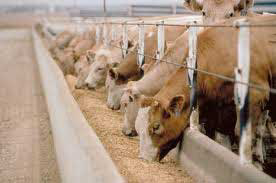Clayton Livestock Research Center focus on cattle health

Northeast New Mexico and the Texas and Oklahoma panhandles form the largest cattle-feeding region in America, marketing more than 6 million fed cattle – 28% of the nation’s feed-cattle production, according to the Texas Cattle Feeders Association.
This region is also home to one of the nation’s premier cattle research facilities – New Mexico State University’s Clayton Livestock Research Center. “The objective of the research station is not to test commercial products, but to facilitate beef cattle production research,” said Michael Hubbert, NMSU professor and superintendent of the facility. “We try to meet the objectives of the state’s cattle growers.”
Research at the center involves shipping protocols for cattle, particularly evaluating the health and performance of newly received cattle at feed yards, as well as nutrition and management of cattle. “Our job is to find out how to make cattle healthier when they go to feed yards so they don’t have to use antibiotics on the cattle,” Hubbert said.
The US FDA is implementing a voluntary plan for the livestock industry to phase out certain antibiotics. As consumer demand for organic and naturally raised beef increases, it is anticipated that antibiotic use for improved production efficiency will decrease and be limited to therapeutic treatments.
“Research at the Clayton center is focusing on how to vaccinate the cattle better, how to better use trace mineral supplements and how to handle the cattle humanely,” Hubbert said. “Basically, we are seeing if we can use probiotics and different mechanisms to make the cattle healthier without given them shots”.
Feedlot operators have had a perception that New Mexico calves are more susceptible to illness upon arrival to their facilities. For the past three years, researchers at the Clayton center have compared calves received directly from New Mexico ranches and calves received from a sale barn in South Texas to see if this perception is true.
Hubbert attributes early illness to the stress the calves experienced during the transition of leaving their mother and herd, being transported to and from sale barns and staying in sale barn holding pens and then being transported to the feed yard.
Another study conducted this year at Clayton was designed to see if novel nasal medication and feed probiotics improved the health and performance of the calves. The early findings of the study found these two protocols did not show a benefit, but more work is being planned to explore this as an alternative to antibiotic use.
Mineral supplements in their diets also affect the health of cattle.
“Minerals play an important role in the immune system,” said Eric Scholljegerdes, NMSU assistant professor of animal science and ruminant nutritionist. “The stress of weaning, transportation and environment can deplete trace mineral reserves in feedlot calves”.
Source: Albuquerque Journal











